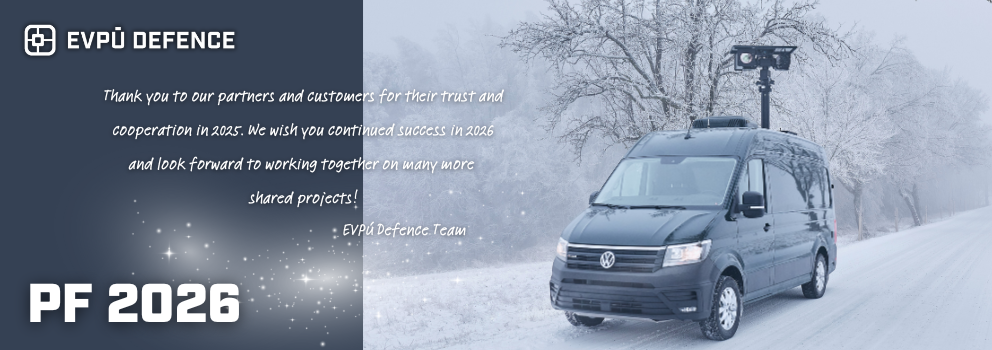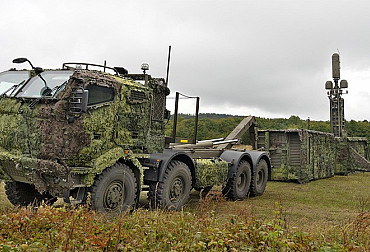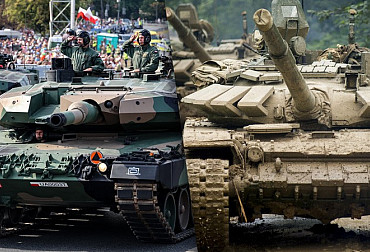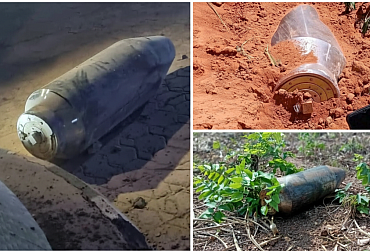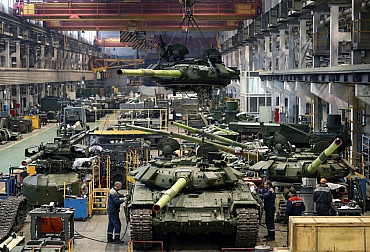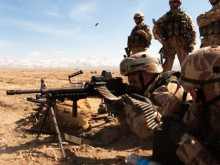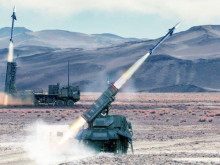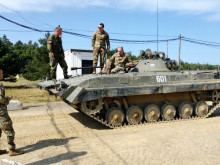Possible Scenarios of Further Development of IFV Acquisition for the ACR
The global economic crisis, coupled with the health crisis, will significantly change a lot of what seemed a solid ground yesterday. Above all, governments will lack money. This new reality will also impact the recent Czech armaments, more precisely the purchases of military equipment from abroad. The above-mentioned crisis might make clear what we really need and for what.
Some projects will need to be cancelled, others postponed. Logically, it will be necessary to support primarily the domestic defence industry and to prefer its employees and its profits in our tax revenues over foreign ones, even if the final product ends up slightly more expensive. It has been known that the Ministry of Defence is underfunded and the domestic defence industry has been deteriorating, but no one has tried to systematically solve it in decades.
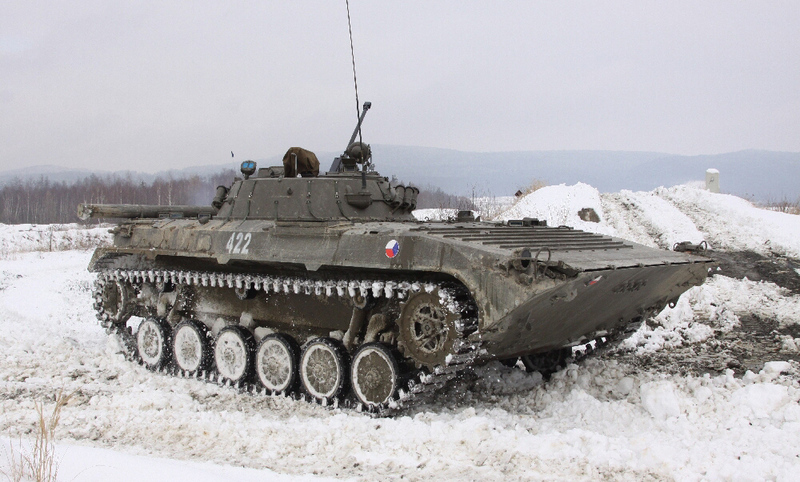
Picture: Only a small part of the existing Czech IFV-2 (pictured) is really combat-ready. To some extent, the officially stated amount of about 180 IVF-2 has more value on the paper. | army.cz
Infantry fighting vehicles (IFV) might also fall under the group of the postponed projects. The result of the drawn out tender is exactly as experts predicted already a year ago. Even then, it was known that a great economic crisis was approaching. In a tender for acquisition of the best IFV for our army without a political or corruption subtext, it is necessary to base the evaluation on a large number of factors. And the fact that the military is usually a symbol of the state and its independence cannot be overlooked. Or at least that it should be.
Acquisitions can be divided into unnecessary and necessary, and into advantageous and disadvantageous. Given that the issue of air defence (specifically radars) has been at least partially resolved for the future, we are set to comprehensively address the issue of what is the main threat in terms of the classic military conflict. The Air Force is small in number, but is in relatively good condition. Gripens have proven to be a good acquisition and we are able to produce jet trainers, light combat and light transport types ourselves. The service life of Gripens can be extended, or they can be systematically replaced in the future by a more modern version, which would be the most efficient and cheapest solution. Heavy and ageing Mi-24 and Mi-17/174 helicopters can serve for another decade. Replacing them by lighter machines UH-1Y and AH-1Z is a step forward in comparison with competing types. We have a large number of modern wheeled armoured vehicles of domestic production such as Pandur II and TITUS, and foreign light armoured vehicles. We have long-neglected the main artillery, partially mechanized infantry and heavily worn-down off-road vehicles. We are able to systematically modernize artillery, be it barrel or missile, and rearm it on our own, or with the help of an advantageous cooperation with proven foreign partners.
Compared to the current conflicts in Asia and Africa, the threat to IFV on the European battlefield is more extensive and complex than in missions in the Islamic area. There, the enemy usually lacks the air force, tanks, IFV and modern artillery, or is endowed with them only in small numbers and with poorly trained personnel. The European IFV with European crews are mostly used there for reconnaissance, escorting supply convoys, as means of transport, or means of fire support in the defence of bases. The IFV crew and transported soldiers (squad/swarm) outside the base usually come across light infantry of the enemy using an element of surprise and familiar terrain and especially urban agglomerations to form something similar to the Hussite wagon fort, and on top of that, they usually have the support of the population. This is how they balance out the technological and sometimes numerical superiority on the part of the forces, which mostly represent the NATO and EU. And that is also why the experience from missions is not very useful in Europe.
Five basic options
Mechanized infantry and its armament form the backbone of the ground forces of any European army. Therefore, it is not possible to give up on its armament, including the IFV. If we ask ourselves whether we need a new tracked IFV, the answer is clear. If we want to have a high-quality army, the answer is yes, definitely. From the practical point of view, there are also other solutions.
%20lr.jpg)
Picture: If we ask ourselves whether we need a new tracked IFV, the answer is clear. If we want to have a high-quality army, the answer is yes, definitely. (pictured Lynx KF4 infantry fighting vehicle) | Rheinmetall
1) The first option is to switch to the program of a light army on wheeled chassis, without tracked IFV. From this point of view, we are saturated with the production of new wheeled types KBVP/OT Pandur II 8x8 and TITUS 6x6 of the MRAP concept. TITUS is also particularly suitable in terms of internal conflicts, especially for the needs of military-type police forces.
2) The second option is a combination of the established new wheeled types and extensive modernization of obsolete IFV-2/IFV-1, without the acquisition of a foreign type. This is how the issue of mechanized infantry is solved for example in Slovakia. The reason for maintaining the tracked IFV is the repeatedly confirmed fact that the passability of a tracked chassis in Central European terrain is better compared to wheeled vehicles, especially for a vehicle weight of around 14 tons and upwards. This is an essential tactical factor, along with the equally true fact that the chassis of the TITUS Tatra concept is of all wheeled armoured vehicles the closest to the passability of the tracked vehicles. This solution would employ the domestic defence industry and reduce the cost of acquisitions from abroad. However, it cannot be overlooked that the Pandur II has lower ballistic resistance in comparison to the current second generation tracked IFV ASCOD, CV90, Lynx, Puma, T-15 Armata and Kurganec 25. Pandur II and TITUS also do not have the firepower and the characteristics of tanks, which would be comparable to the second-generation tracked IFV, not only because of the caliber of their main weapon.
3) The third option is to maintain the current rearmament program, i.e. the acquisition of second-generation track IFV from abroad for part of the ground forces. The advantage is getting the best deal in global comparison. What is important is the extent of the share of the Czech defence industry in terms of production, subsequent operation and repairs, the price and the method of payment. In any case, from the military point of view, the acquisition of the second generation IFV is the most effective solution to the problem of modernizing our ground forces with tracked IFV. For now and also for the future, it provides the best achievable combination of fire-power, mobility, protection and lining for mechanized infantry. We may choose to postpone it, divide it so it is not so financially demanding all at once, or combine both, but it is definitely not convenient to give it up. A variant of the third option would be a combination of the acquisition of the second generation IFV, the elimination of obsolete IFV-2 and the expansion of Pandur II production for the needs of reserves.
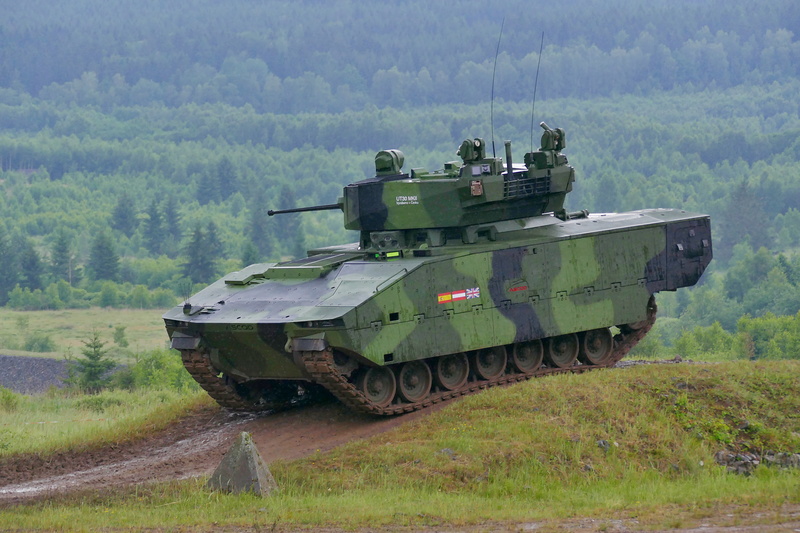
Picture: Infantry fighting vehicles participating in the Czech tender are very similar in terms of technology (pictured armoured vehicle ASCOD 2). What they have in common is the weight of about 40 tons, their armament represented by a turret with a 30-35mm cannon. They are also similar in their technological processing, which is at a very high level for all three types. | archive of CZD
4) The fourth option would be a combination of acquisition of a lower number of second-generation tracked IFV, in the basic combat and command version, combined with increased production of TITUS or Pandur II wheeled armoured types and other domestically produced specialized vehicles, especially mortar, medical, bridge, rescue, communications and other types. These vehicles either already exist or it is not a problem to construct them on the basis of the established Pandur II or TITUS types. This would lead to the creation of a tactical set, corresponding roughly to the Bundeswehr, in which the first line consists of a second-generation tracked IFV Puma in the basic version and the second is comprised of a wheeled OT Boxer and other means. Increasing the numbers of the second-generation IFV stocks would be a matter of the distant future, and at the same time, all the problems with series production would be eliminated. Pursuing this solution, we would largely maintain the growth of the mechanized infantry's combat value and at the same time we would reduce the costs of foreign-type acquisitions during a crisis, while strengthening the domestic defence industry. At the same time, relatively lower operating costs can be expected in the long term, in comparison to fast and complete rearmament to second-generation tracked IFV.
5) The last option is the development and production of a second-generation tracked IFV with the help of our own resources. A similar program was carried out by Poles with the development of Borsuk IFV. However, the start of rearmament would be postponed by the development period. The question is whether this would be an advantage or a disadvantage in the current situation. The current IFV is basically a jigsaw of engines, gearboxes, weapons, optoelectronic devices, wheel suspensions, tracks and communication means by a few world manufacturers. No one apart from them still develops or manufactures propulsion systems, equipment and other materials. All this in or on the armoured hull and turret. There can also be purchased the active and reactive protection systems. The question is whether our current defence industry could do such a thing. However, the Czech Republic already has practical experience with the production of Pandur II and TITUS vehicles, the modernization of T-72 tanks, functional models of the Patriot wheeled armoured vehicle, Vampire rocket launchers, the modernization programs of DANA self-propelled cannon howitzers, or the modernization of the IFV Šakal.
In conclusion, it can be said that the need for tracked IFV for our army is indeed topical, and luckily there are a number of different solutions using the capabilities of the domestic defence industry.


